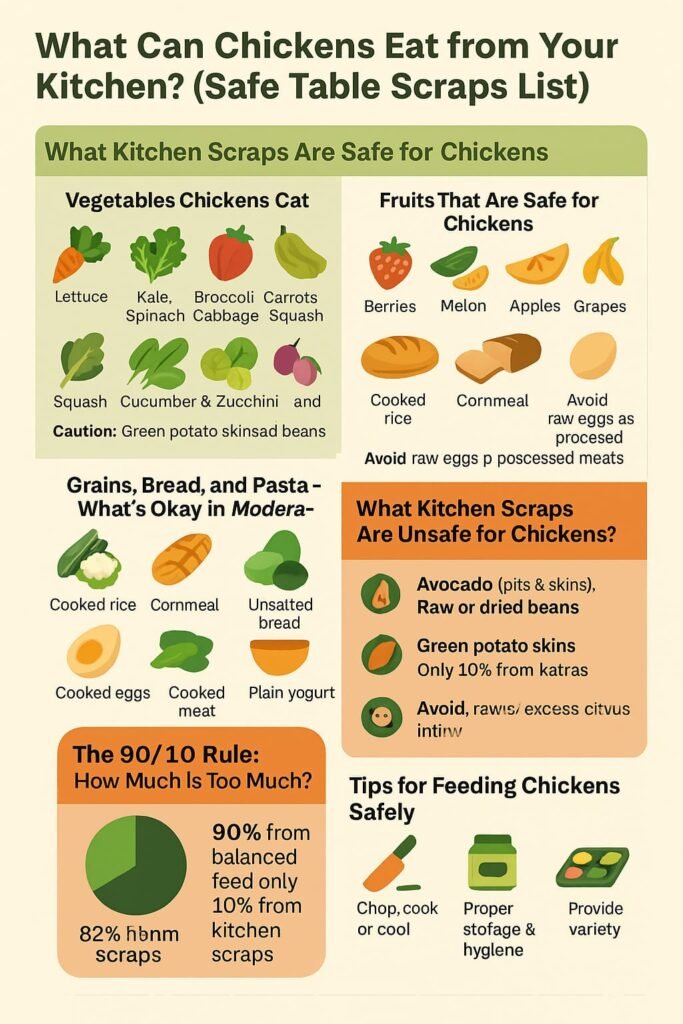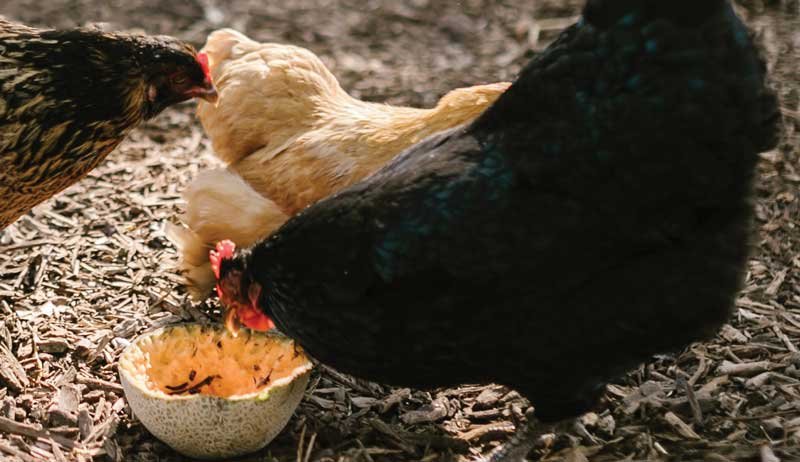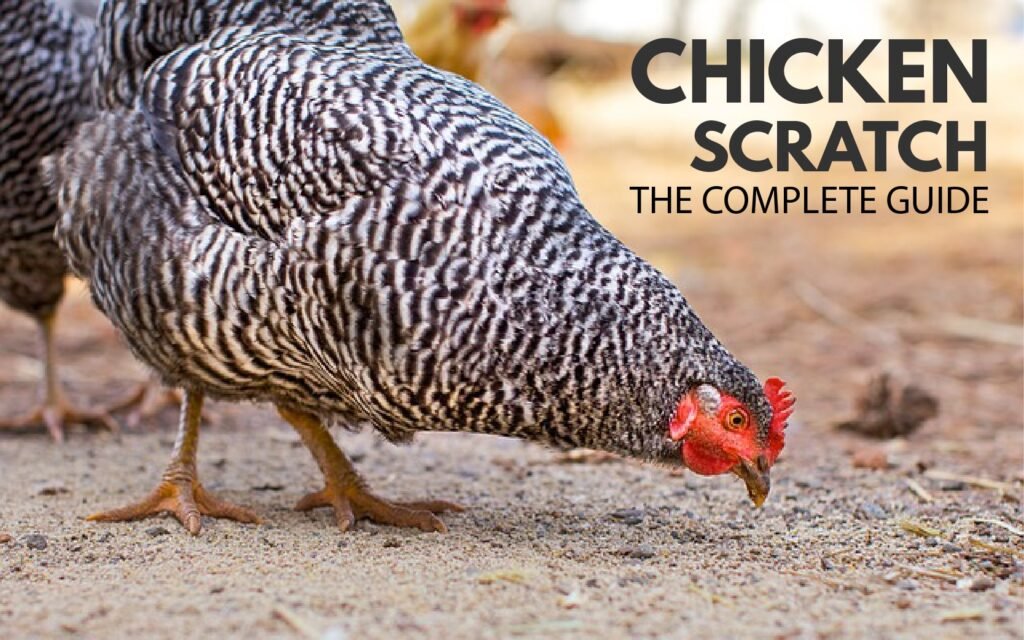Have a backyard flock and kitchen scraps? Many common food items are safe and beneficial for your chickens, reducing waste and providing treats. This guide helps you safely repurpose kitchen waste for your flock. However, some foods are dangerous. Understanding what’s safe and what’s not is crucial for their health.
What Kitchen Scraps Are Safe for Chickens?
Chickens are natural foragers and benefit from a varied diet. Kitchen scraps supplement their regular feed, providing nutrients and entertainment. Stick to whole, unprocessed foods and always use moderation.
Chickens can safely eat a variety of kitchen scraps, including most vegetables, fruits (without seeds/pits), cooked grains, plain cooked meat, and eggs, provided they are unsalted, unseasoned, and given in moderation.
My own flock once ate moldy bread I’d accidentally left out; trust me, a sick chicken is no fun for anyone. So, let’s look at what’s safe and unsafe, and how to feed them correctly.
Vegetables Chickens Can Eat
Most vegetables are valuable additions to your chickens’ diet. They pack vitamins and minerals, and chickens readily consume them. Sometimes, I think they enjoy kale more than I do!
Safe Veggies for Chickens:
- Leafy Greens: Lettuce, kale, spinach, chard, collard greens.
- Cruciferous Veggies: Broccoli, cabbage, cauliflower (florets or chopped).
- Root Vegetables: Carrots (shredded or finely chopped), beets, parsnips.
- Squash & Pumpkin: Cooked or raw, cut into manageable pieces (including seeds).
- Corn & Peas: Fresh, frozen (thawed), or cooked.
- Cucumbers & Zucchini: Good for hydration.
Caution: Avoid green potato skins and raw or dried beans. Green potato parts contain solanine, a toxic substance. Raw beans have phytohaemagglutinin, which is very harmful. Learning this the hard way is avoidable. Chickens aren’t living compost bins; their health and safety demand care.
Fruits That Are Safe for Chickens
Fruits can be a pleasant treat for chickens, providing a good boost of vitamins. Remember, their high sugar content necessitates moderation. Consider them an occasional indulgence, not a regular meal component.
Safe Fruits for Chickens:
- Berries: Strawberries, blueberries, raspberries – frequently a favored item for the flock! My girls go absolutely wild for a handful of fresh berries.
- Melons: Watermelon, cantaloupe, honeydew (including rinds).
- Apples & Pears: Remove seeds and core; chop into small pieces. Caution is advisable here.
- Bananas: Both the fruit and chopped peels are safe.
- Grapes: Chop in half, especially for smaller birds, to prevent choking. Our goal is to avoid any unexpected issues!
Avoid: Large pits from fruits like avocados (the skin and pit contain persin, toxic to chickens), peaches, and cherries. Small amounts of citrus are not necessarily toxic, but large quantities can cause digestive upset or affect eggshell quality. Offering them sparingly or avoiding them entirely is best. Is the potential risk truly worth it? Some keepers report no issues with occasional citrus; however, many prefer to err on the side of caution, given the potential for digestive upset.
Grains, Bread, and Pasta – What’s Okay in Moderation
Grains, bread, and pasta can be given as occasional treats, but they should not make up a large portion of their diet. Primarily carbohydrates, they offer energy but lack substantial balanced nutrition. These are mostly empty calories. A small piece is okay now and then, but too much can lead to nutritional imbalances. It’s tempting with leftovers, but your chickens’ health comes first.
Okay Grains, Bread, and Pasta (in moderation):
- Cooked Rice: Plain, white or brown.
- Oats: Rolled or steel-cut, raw or cooked.
- Cornmeal: Plain.
- Unsalted Bread: Small pieces.
- Cooked Pasta: Plain, without sauce or salt.
No-nos: Sugary cereals, moldy bread (a significant concern!), or anything heavily processed or salted. If it’s moldy, it’s simply not an option.
Protein Sources: Eggs, Meat, and Dairy
Chickens require protein, particularly laying hens. These scraps can effectively boost their protein intake. And yes, feeding them eggs might feel a little unusual, but they don’t seem to mind!
Good Protein Sources from Scraps:
- Cooked Eggs: Scrambled, boiled, or baked. Valuable, nutrient-rich.
- Cooked Meat: Plain, unsalted, unseasoned scraps (chicken, beef, fish).
- Plain Yogurt: Small amounts, unsweetened. Can benefit gut health.
Avoid: Raw eggs (this can lead to egg-eating habits – a challenging issue you want to avoid!). While some might argue that chickens would naturally consume raw eggs in the wild, the reality of a coop environment means this habit can quickly result in broken eggs and lost production. Bones (choking hazard), and processed meats like bacon, sausage, or deli meats due to their high salt and fat content.
Leftovers That Are Generally Safe (If Unsalted, Unseasoned)
The key here is “plain.” If your leftover dinner consists of plain cooked rice, steamed veggies, or unseasoned chicken, then it’s likely safe. But realistically, how often is your dinner truly plain? In my kitchen, it’s a rare occurrence!
Generally Safe Leftovers:
- Plain Cooked Rice
- Steamed or Boiled Vegetables (without butter/heavy sauces)
- Plain Cooked Pasta (no heavy sauces, cheese, or salt)
- Unseasoned Cooked Meat (small pieces)
Watch for: Anything heavily seasoned with salt, spices, oils, butter, or rich sauces. These can upset a chicken’s digestive system. I once gave my chickens some leftover casserole that contained a lot of onion and garlic powder; they definitely looked a bit off the next day. A valuable lesson learned: keep it simple! My heart sank when I observed their poor condition.
What Kitchen Scraps Are Unsafe for Chickens?
Just as there are safe foods, a list of definite no-gos exists. Feeding your chickens the wrong thing can lead to serious illness or even death. Knowing these and keeping them far from your flock is crucial. Consider this your “Danger Zone” list.
Chickens should never eat toxic foods like avocado pits/skins, raw beans, green potato parts, chocolate, or caffeine. Moldy/spoiled foods and anything heavily seasoned, salted, or processed are also highly dangerous.
Toxic Foods to Avoid
These foods contain compounds poisonous to chickens, even in small amounts. It’s simply not worth the risk. The presence of so many common human foods on this list is quite surprising.
Toxic Foods Chickens Must Avoid:
- Avocado (Pits & Skins): Contains persin. (Source: Happy Morning Farm)
- Raw or Dried Beans: Highly toxic due to phytohaemagglutinin; must be thoroughly cooked. (Source: Happy Morning Farm)
- Green Potato Skins & Green Parts of Tomatoes: Contain solanine. (Source: Happy Morning Farm)
- Chocolate, Coffee, & Caffeine: Stimulants toxic to chickens. (Source: Happy Morning Farm)
- Alcohol: Severe intoxication and death can result.
- Rhubarb: Leaves and stalks contain oxalic acid. (Source: My Pet Chicken)
Moldy, Rotten, or Spoiled Foods
This is a significant point, and it’s where I learned my lesson. While chickens are often depicted pecking at anything, moldy or rotten food poses a serious health hazard. My stomach still clenches remembering that day. Despite the common image of chickens eating “anything,” their digestive systems are surprisingly sensitive to toxins produced by molds.
- Dangers of Mold: Molds produce mycotoxins, causing issues from digestive upset to organ damage and death.
- Botulism: Spoiled food can harbor Clostridium botulinum bacteria, leading to paralysis and often fatal outcomes. (Source: Dine-A-Chook, Merck Veterinary Manual)
- Signs to Check: If it smells off, looks slimy, or has visible mold, do not feed it to your chickens. When in doubt, discard it. Your chickens’ health holds greater importance than salvaging a few scraps.
Seasonings, Salt, and Processed Ingredients
Our human palates enjoy a lot of flavor; however, those flavors often come from ingredients harmful to chickens. Just because it’s tasty to us doesn’t mean it’s good for your hens!
- Why Sodium Harms Chickens: Chickens are highly sensitive to salt. High sodium intake can lead to dehydration, kidney damage, and even salt poisoning, which can be fatal. Avoid anything heavily salted. The risk is simply too high. (Source: Merck Veterinary Manual, Poultry DVM)
- Oils, Butter, Sauces, and Processed Snacks: These are often high in unhealthy fats, sugar, and artificial ingredients, which chickens’ digestive systems are not designed to handle. Think chips, cookies, sugary drinks, fried foods, and rich gravies – keep them for yourself! Your chickens will be better off without them.
The 90/10 Rule: How Much Is Too Much?
This is perhaps the most important rule when feeding your chickens kitchen scraps. Consider scraps as treats, not meals. Managing this is simpler than you might expect!
90% of a chicken’s diet should come from balanced formulated feed, with only 10% from kitchen scraps and other treats.
Why Balanced Feed Still Matters
Commercial chicken feed is specifically formulated to provide all the essential vitamins, minerals, and protein your chickens need for optimal health, growth, and egg production. It represents their complete nutritional package, designed for their specific needs.
- Nutritional Gaps: Overfeeding scraps causes chickens to fill up on them, leading them to consume less of their balanced feed. This can result in nutritional deficiencies, impacting their egg-laying, feather quality, and overall health. Who desires fewer eggs or dull feathers?
- Specific Needs: Laying hens, for example, require a specific calcium-to-phosphorus ratio for strong eggshells, carefully balanced in layer feed. Scraps alone will not provide this. It’s akin to attempting to build a house with only a hammer – all the right tools are necessary! While the 90/10 rule offers a solid guideline, some highly experienced keepers might slightly adjust this percentage for specific, short-term needs (such as extra protein during a heavy molt or more energy in extreme cold). However, this is always done with careful consideration of the flock’s overall nutritional intake, not just casual feeding.
Portion Guidance for Treats & Scraps
The “90/10 Rule” serves as your primary guideline: 90% of their diet should be high-quality, balanced commercial feed, and no more than 10% should come from treats and kitchen scraps.
For an average flock, a handful or two of scraps per bird, a few times a week, is usually sufficient. This approach focuses on supplementing, not replacing. Consider it like offering a child candy: a small amount is a pleasant treat, but too much diminishes their appetite for more nutritious foods. We’ve all encountered that situation, haven’t we?

Common Questions About Table Scraps for Chickens
It’s natural to have questions when determining the best approach for your flock. Here are some common queries I frequently encounter. I understand the initial confusion; I experienced it myself!
Can Chickens Eat Banana Peels?
Yes, chopped banana peels are safe for chickens to eat. They contain some vitamins and minerals, and their fibrous texture can be an interesting addition. However, not all chickens will enjoy them, so do not be surprised if they don’t consume them all. My chickens are quite particular about their banana peels, to be honest.
Can Chickens Eat Scrambled Eggs or Cooked Meat?
Absolutely. Cooked eggs (scrambled, boiled, or baked) and cooked, unseasoned meat scraps are excellent sources of protein for chickens. These are particularly beneficial for laying hens or during molting, when their protein needs are higher. Simply ensure they are thoroughly cooked and cooled.
Is It Illegal to Feed Chickens Kitchen Scraps?
In the U.S., it’s not federally illegal to feed kitchen scraps to backyard chickens, but local laws vary. Some states or municipalities restrict certain items—especially meat or dairy—to prevent disease risks in backyard or commercial flocks. Always prudent, verifying local regulations is a wise step. It’s a complex area where public health and backyard practices intersect, isn’t it? For more details on what’s allowed in your area, consult our guide on chicken laws by state.
What About Bones, Onion, Garlic, or Citrus?
Bones: Avoid giving bones to chickens. Small bones can pose a choking hazard, and larger ones offer no nutritional benefit while potentially splintering.
Onion & Garlic: While not immediately fatal in small amounts, large quantities of onion and garlic can cause hemolytic anemia in chickens, damaging their red blood cells. They can also taint the flavor of eggs. Avoiding them is best. Who would prefer garlic-flavored eggs anyway?
Citrus: As mentioned earlier, citrus fruits (oranges, lemons, limes, grapefruits) are generally not toxic, but their high acidity can sometimes cause digestive upset or lead to softer eggshells if fed in large quantities. Offer sparingly, if at all. While some sources suggest complete avoidance, others note that small, infrequent amounts might not cause issues. The consensus leans toward caution.
Tips for Feeding Chickens Safely from Your Kitchen
Feeding scraps can be an effective way to reduce waste and enrich your chickens’ lives, but careful preparation and hygiene are important. Consider these your essential guidelines for a healthy flock. This section explains the process of safely incorporating kitchen scraps into your chickens’ diet. It’s an ongoing learning process, and every flock has its unique preferences!
Prep Tips: Chop, Cook, or Cool
- Chop it Up: Large pieces of food can present a choking hazard. Always chop larger fruits and vegetables into bite-sized pieces. My chickens once struggled with a whole apple; now, I always core and dice them. This saves them frustration, and me concern!
- Cook for Safety: Raw beans are toxic; cook them thoroughly. Cooked meat and eggs are safer and more digestible.
- Cool It Down: Never feed hot scraps to your chickens. Allow them to cool completely to room temperature before offering them. Imagine consuming something piping hot – it’s not pleasant!
Storage, Mold Prevention & Scrap Hygiene
- Fresh is Best: Only feed fresh, unspoiled scraps. If you wouldn’t consume it, your chickens shouldn’t either. This is a fundamental rule.
- Prevent Mold: Store scraps in an airtight container in the fridge if saving them for a day or two. For larger quantities, consider freezing safe scraps in batches to extend their usability. This proves an efficient way to manage kitchen waste.
- Clean Up: Do not leave large piles of uneaten scraps in the coop or run. This can attract pests like rodents and flies. Feed scraps during the day, and remove any uneaten portions by nightfall. No one desires a rodent infestation in their coop! For more ways to keep your flock safe, explore our guides on predator-proofing your coop and finding the best predator deterrents for chickens.
Scrap Rotation Ideas for Flock Variety
Keep things varied for your flock! Instead of feeding the same thing every day, rotate the types of scraps you offer. This can be a novel experience for them!
Ideas for Scrap Rotation:
- “Salad Bar” Day: A mix of leafy greens and chopped veggies.
- “Fruit Fiesta” Day: A medley of berries, melon, and chopped apples.
- “Protein Power-Up” Day: Cooked eggs and plain meat scraps.
- “Grain Grub” Day: A small portion of cooked rice or oats.
By rotating, you help ensure they receive a wider range of nutrients and maintain their interest in treats. Moreover, observing them discover new favorites is engaging!
Feeding your chickens kitchen scraps can be a rewarding experience, reducing food waste and providing your flock with healthy, enriching treats. Just remember the key principles: moderation (the 90/10 rule!), safety (understand what’s toxic and avoid mold!), and proper preparation. Your chickens will likely show their appreciation with contented sounds and consistent egg production! If you’re just starting your chicken-keeping journey, be sure to avoid common pitfalls by reading about mistakes every first-time chicken keeper makes.
FAQs – What Can Chickens Eat from Your Kitchen? (Safe Table Scraps List)
Here are quick, direct answers to common questions about feeding kitchen scraps to chickens:
What kitchen scraps are safe for chickens?
Most vegetables (like leafy greens, carrots, squash), fruits (like berries, melon, seedless apples), cooked grains (rice, oats), plain cooked meat, and cooked eggs are safe for chickens. Ensure they are unsalted and unseasoned.
What table food is safe for chickens?
Safe table foods for chickens include plain cooked rice, steamed vegetables, plain cooked pasta, and unseasoned cooked meat. Always avoid salt, heavy sauces, and excessive fats.
What table scraps should you not feed chickens?
Do not feed chickens toxic foods like avocado pits/skins, raw beans, green potato parts, chocolate, caffeine, or alcohol. Also avoid moldy/spoiled foods, and anything heavily seasoned, salted, or processed.
What is the 90/10 rule for chickens?
The 90/10 rule states that 90% of a chicken’s diet should come from balanced, formulated commercial feed, and only 10% should be from kitchen scraps and other treats. This ensures they receive complete nutrition.
What scraps are not safe for chickens?
Scraps not safe for chickens include moldy or rotten food, avocado pits and skins, raw beans, green parts of potatoes, chocolate, caffeine, alcohol, and anything with high levels of salt, sugar, or unhealthy fats.
Can chickens eat banana peels?
Yes, chickens can eat chopped banana peels. While safe and containing some nutrients, not all chickens will enjoy them due to their texture.
Why is it illegal to feed chickens kitchen scraps?
In the U.S., it’s not federally illegal to feed kitchen scraps to backyard chickens, but local laws vary. Some states or municipalities restrict certain items—especially meat or dairy—to prevent disease risks in backyard or commercial flocks.
Can chickens eat scrambled eggs?
Yes, chickens can safely eat scrambled eggs. Cooked eggs are an excellent source of protein and a beneficial treat for chickens.


